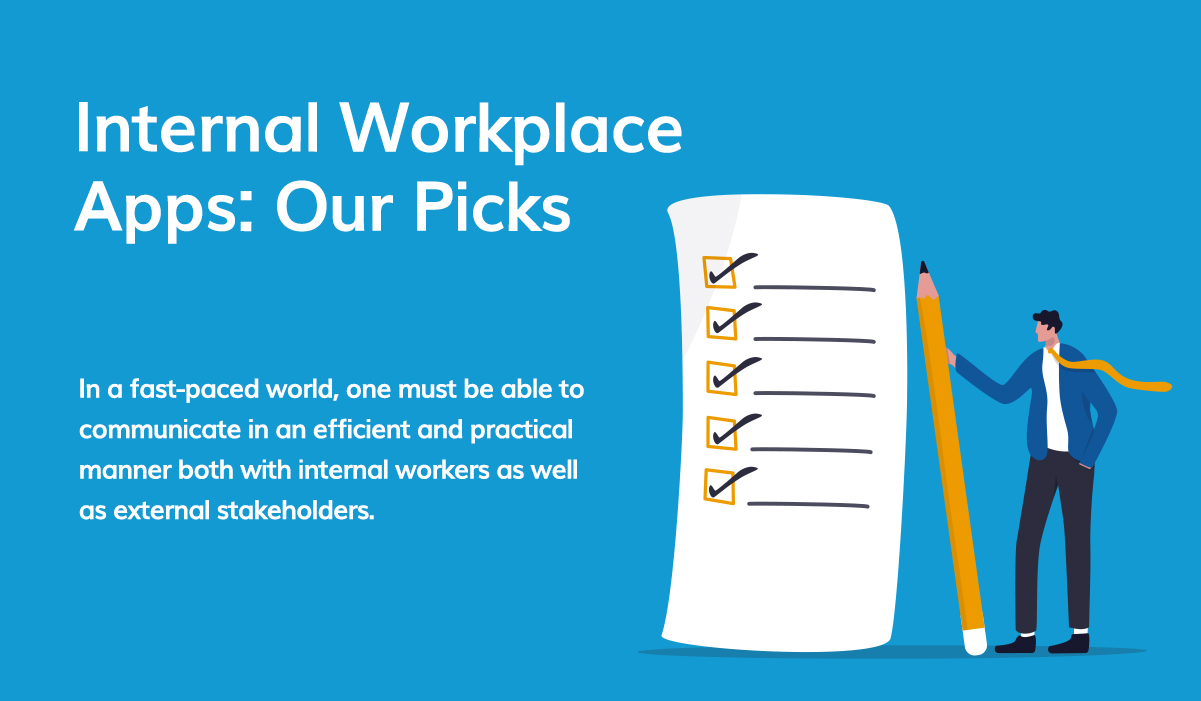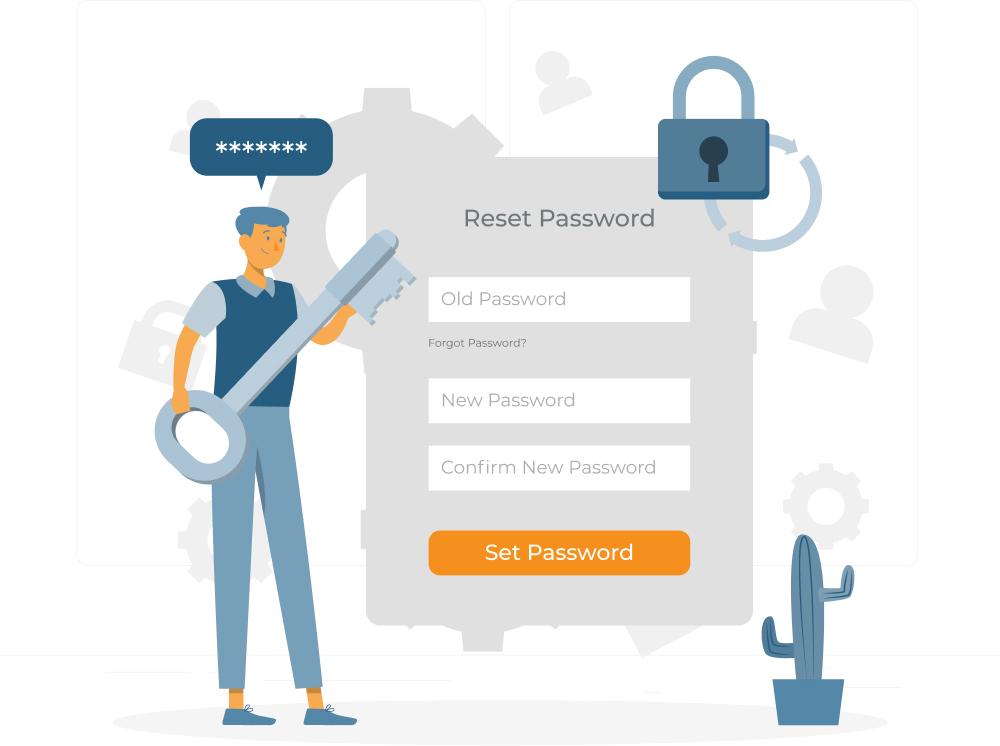Internal workplace communication has quickly become almost entirely digitised. Since the internal memorandum (memo), the face of internal communications has changed radically. In order to stay competitive, companies must embrace the power of communication apps to effectively manage internal and external business relationships, among colleagues, and clients.
Moreover, with the rise of the gig economy, it is no longer a straightforward matter. In a fast-paced world, one must be able to communicate in an efficient and practical manner both with internal workers as well as external stakeholders. The workplace has also become more collaborative and feedback is continuous. Technology, however, does not replace the real thing. One must be aware of the limitations and work to make up for them. In this article, we outline some internal communication apps and digital solutions and how you can use them to help your team. We use some of these apps at KMP and we love them. Here are our picks.
1. Office Apps
Google Workspace and Microsoft365
Google Workspace and Microsoft 365 have become ubiquitous in the workplace. We all use them in some way or another. Indeed, the two office suites have a lot in common. Both are now subscription-based, charging businesses a fee per individual every month. Different pricing tiers offer different capabilities depending on what you may be after. The Google suite is more web-based, but it offers offline capabilities as well. Whereas Microsoft 365 is more geared towards offline and desktop use. Although it still offers less-powerful versions of its apps for web use. Both work on a range of devices and across browsers. The core applications are also similar – offering word processing, spreadsheet, presentation, email, calendar, video conferencing and note-taking software at their core. Both also offer cloud storage solutions. If you are after more sophisticated search functions and collaboration, Google Workspace may be for you. On the other hand, if you’re after more powerful and sophisticated features, Microsoft 365 may serve your needs better. You can still collaborate in 365, it’s just not as straightforward.
Both offer great functionality and ease of use and similar core apps, so it largely depends on your organisation’s needs.
2. Instant Messaging apps
Slack and Whatsapp
Not everything needs to be an email. For the daily back and forth, instant messaging is many a modern worker’s go-to. Two popular apps are Slack and Whatsapp. “l’ll Slack / Whatsapp you.” Just like Google, both of these instant messaging systems have basically become a verb. Although Whatsapp began as a messaging app used for the day-to-day between family and friends, it made its way to the workplace too. On the other hand, Slack was built for the workplace. You can quickly send audio clips, ask your colleagues for their lunch order, send a screenshot of an idea you loved, and you can segment by channel! Say you want a #marketing channel for the Marketing staff to hash out ideas before they become projects, or a channel for the Marketing and Sales departments to quickly send updates or quick questions, with Slack you can do it. You don’t have to wait for the next meeting to ask about Project X or share your idea. It can be now. It’s perfectly suited for a fast-paced office. The option to pin important messages also helps makes sure notices don’t get lost in the noise and occasional meme share.
It’s worth noting that one must be careful with either of these apps. Always set ground rules. With IM apps, communication silos can easily be created, and it would pave the way for bullying or harassment of a colleague who is only sitting two desks away. Since you can reach out anytime, it may seem more urgent than email. If it’s 8pm on a Saturday and you think of something, resist the urge to message. If it can wait, jot it in your notes and message about it on Monday. The recipient may feel obligated to get back to you. It’s just etiquette to wait till the next business day. Internal IM apps do create camaraderie, however, and, therefore, more engaged workers. Connecting Slack to other services, such as Google Drive will allow you to share files directly on the chat. With Whatsapp, the pace is more casual, but some may be more used to it. It offers ease of use and is completely free. On Whatsapp, users are connected via their phone numbers, not work emails (like Slack). Since many more people are used to Whatsapp, it is understandable to adapt tools that your employees are already comfortable using. It is important, however, to adopt policies on messaging at the Workplace to avoid problems down the line.
3. Project Management tools
Monday.com, Trello and Jira
There is an endless list of Project Management tools out there, the ones we’ve used and recommend are Monday, Trello and Jira. Monday is probably the most versatile in terms of industry use. It’s a collaboration tool that helps teams get stuff done and keep track of who’s doing what and which projects are being tackled. Monday.com have built what they call a “Work OS”. It’s a tool for list-tracking, collaboration and project management. It gets the job done. You may also want to try Asana, which also offers a number of customisation options and flexibility and offers functionality similar to Monday.com. Trello and Jira are more project-management oriented and are more geared toward product development. Trello is more lightweight – offering a simple, Kanban-focused, card and list layout. Jira, on the other hand, is built for software development teams (but really, it can work for anything if it suits your needs). It also has Scrum boards and other Agile workflows. If you’re collaborating on a kitchen remodel with your partner, Trello may serve your purpose, but if you’re working on a software project with a team of 5 developers, Jira may be your better bet. It will give you more structure, control, and options.
With project management apps, it may require some time to find the one which perfectly suits your team’s needs, but in the end, they are worth the effort as they pave the way for a more efficient and accountable workflow.
4. Conferencing apps
Zoom, Google Meet and Microsoft Teams
Everyone knows what Zoom is. It quickly grew in popularity – mostly because it’s reliable and gets the job done. Purely for video conferencing, you join a meeting by clicking a link and you’re in. As simple as that. Zoom also allows for recording sessions. It also allows for in-conference chatting (individual or private messaging). It lets you schedule in advance and even set up recurring meetings. Google’s video-conferencing offering comes under the name ‘Google Meet’. Meetings are easy to set up, especially if you already use Google Workspace. Within one email, you can schedule a Meet link, and have it automatically added to your calendar and sent to everyone’s inbox. It’s also completely free and runs in-browser… no need to download apps. It’s not the best for large calls though and the call quality will lessen when the connection is slow. If you’re team Microsoft365, you’ve most definitely used Microsoft Teams. It’s video and chat all in one and it’s the most feature-robust of them all. It has a Whiteboard function that makes it easy to take notes on the fly and display sketches to those on your call. The chat from the meeting is saved in your team chat for future reference and it has great video quality to boot. It can seem cluttered though, due to it being feature heavy. These are all apps worth considering depending on the system you are already using and what your team is used to.
With the rise of remote work, video-conferencing has become more commonplace. Whether you want a 30-minute catch-up with a colleague or a more in-depth brainstorming session, you are likely to need a conferencing app. For either of these, you won’t have to waste time commuting and you have more time on your hands to get stuff done!
What tools does your team use? Do you find apps to be helpful in your workplace or a hindrance? Let us know.
Do you have any ideas or articles you’d like to share with the Keepmeposted Team? We’re open to collaborations from third parties that offer insight into the Workplace, or that might provide a refreshing point of view to our readers and users. Submit your article here. Articles are published at the discretion of our team and do not necessarily reflect our views or stance.
Share with someone who needs to see this.


